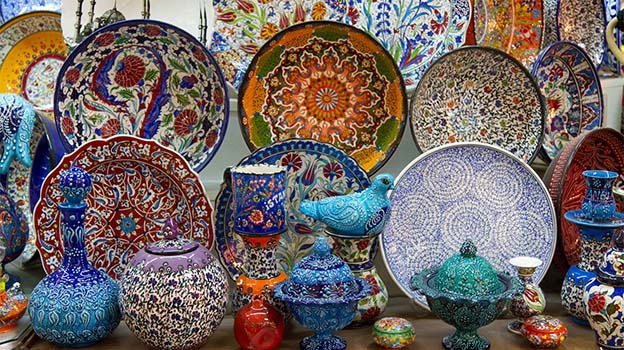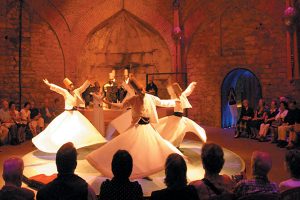The art of Turkish tiles and ceramics which developed in Anatolia reached its highest level of technique and aesthetic especially during the Seljuk and Ottoman periods.
ART OF TURKISH CERAMIC
The art of ceramic has become a cultural treasure by developing in Anatolia throughout history. Throughout the time from the first ages, with its enhancing motifs and raw material being clay; a mixture of metal, nonmetal and oxide, it has turned into a work of art that reflects societies’ sensitivity, cultural accumulation, religious beliefs, relationships and lives within society.
The art of ceramic which developed in Anatolia reached its highest level of technique and aesthetic especially during the Seljuk and Ottoman periods. Other branches of ceramics could be grouped as the art of tile making, brick and roof tile production.
Today, Kutahya has been revived as an important center of tile and ceramic making. In addition, efforts are also being made in private workshops and educational institutions in Iznik, Istanbul, and Bursa to keep the art of traditional Turkish tiles and ceramics alive and develop it so that it can address the demands of modern day life.
IZNIK TILES
In the 17th century, Iznik became an important tile production centre of the Ottoman Empire. The most distinctive characteristic of the 16th century Iznik tiles and ceramics is the red colour added to the blue-white adornment except green, turquoise, and black. The slightly swollen coral red under the frit is the most distinctive element of this ceramic style in the 16th century.
KUTAHYA CERAMICS
Kutahya was Ottoman’s most important centre of ceramic production. Thanks to abundant deposits of clay in the area, ceramics were made here in large quantities in Phrygian, Hellenistic, Roman and Byzantine times, and the traditional techniques of this art have survived to the present day.
CANAKKALE CERAMICS
From the end of the 17th century to the first decades of the 20th century, Canakkale was the production area of authentic and picturesque formed works of art. Purplish brown, orange, yellow, dark blue and white paints were applied under transparent glaze. Pitchers, vases, cruses, plates, mugs, writing sets, braziers are among the most common ceramic objects as well as spouted, ring shaped, horse topped pitchers, or pitchers with beak mouth.




